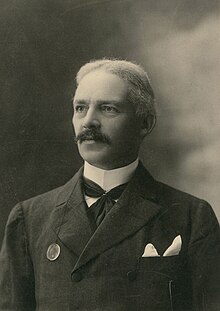George Temple-Poole
| George Thomas Temple-Poole | |
|---|---|

George T.T. Poole c. 1918
|
|
| Born | 29 May 1856 Rome, Italy |
| Died | 27 February 1934 Darlington, Western Australia |
| Occupation | Principal Architect, public servant, painter |
| Spouse(s) | Beatrice Hamilton Banger, Daisy Rossi |
| Children | Isuelt (with Rossi) |
| Parent(s) | John George Temple and Louisa Mary, née Poole |
George Thomas Temple-Poole (born George Thomas Temple, 29 May 1856 – 27 February 1934) was a British architect and public servant, primarily known for his work in Western Australia from 1885.
As Principal Architect, Western Australia, in a period of rapid urban development during the Australian gold boom, he made notable contributions to Australian architecture and town planning prior to federation. His designs for public space and buildings are often identified and preserved by local councils and heritage registers. He also held roles relating to town planning, commerce, the arts, and 'society' of Western Australia. His founding and chairing of committees and institutions included; the Western Australian Institute of Architects (later merged to the Australian Institute of Architects), Perth Park (Kings Park Board), and the Wilgie Sketching Society.
George Temple-Poole was born in Rome, Italy to Louise Mary, née Poole, and John George Temple, a Lieutenant Colonel in the British Army. Poole's father died shortly after the family returned to England following the Crimean War. His mother remarried, altering his surname to Temple-Poole. He was educated at Winchester College in England. Articled in engineering and architecture to a London engineering firm designing harbour works for the River Thames, he then practised in Ceylon for two years before being appointed to the Public Works Department in Western Australia.
Poole (the surname he used in Perth) designed a 'series' of public buildings that were constructed in and around ports, towns and suburbs of Western Australia during the Federation Period c. 1890 – c. 1915. While his work was largely influenced by contemporary British movements, Poole contributed in the development of the Australian architectural response to environment and circumstances. He provided a unifying style to the public buildings as government established its presence throughout Western Australia. His buildings influenced residential and non-residential architecture in the state regional centres.
...
Wikipedia
